Instruction
The Ultimate Putting Program (Part 3): Pick a putter that matches your path
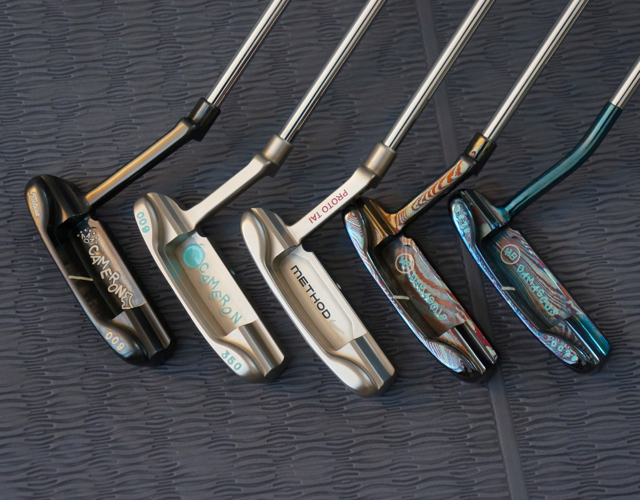
We have discussed how the design of a putter affects a golfer’s ability to control aim and speed. Now it is time to look at how it affects the path of the stroke.
I believe the optimal path of a putting stroke is one that returns the putter head to impact so that it’s perpendicular to the target line. This seems to provide the most room for error. Others may believe that it is ok to have variations within the path and aim so long as the two cancel each other out and the ball rolls toward the target. Whichever way you look at it, there are design elements of the putter that influence face rotation, thus affecting the direction of the putter at impact.
On almost every putting green, I’ve seen golfers trying to become better putters. But many of them try to improve the path of their stroke before addressing their ability to aim their putter at address. Someone can work on the path of their stroke all they want, but I’ve found that if they don’t aim their putter at the target, it will be difficult to improve.
If you have not already read The Ultimate Putting Program (Part 1): The Design of Your Putter Influences Aim, click here to do so. It will give you the framework to understand my take on path.
Let’s consider a golfer who consistently miss-aims his putter 4 inches left of the hole, and has developed a compensating action during his stroke to roll the ball on his intended line. The compensation may be a push stroke, an opening of the clubface or a combination of the two. This type of compensation may work fine, but is likely to be inconsistent in the long run. It is also very likely that after a bad round of putting, a friend, or maybe the local golf professional will mention that he has an in-to-out stroke, and for him to become a better putter he will need to improve the path of his stroke.
So what happens? The golfer likely sees this as great information, and begins working on improving his path. He may even go as far as to practice the various putting drills that are so commonly recommend. Well, guess what? It is very likely that the will indeed improve the path of his stroke, but unfortunately for him, he won’t be aiming at the target, so now he will simply roll the ball where he is aiming; four inches left of the hole.
That’s why I suggest first improving aim, and then developing a stroke path that rolls your ball on your intended line. In my opinion, this is the easiest route for most golfers to improve.
Path Type: Arc or Straight-Back-Straight-Through (SBST)

There is a continuing debate amongst golfers on whether an arcing stroke or a SBST stroke is correct. I imagine that neither stroke is any better or worse than the other, but the fact of the matter is that a true SBST stroke is a manipulation of the hands and the wrists, whereas the arcing stroke adheres more to the laws of geometry and physics.
The amount of arc in a golfer’s stroke is primarily the result of how far the golfer stands from the ball. A golfer who stands rather close to the ball is likely to have a stroke that is close to being SBST, whereas someone who stands farther from the ball will likely have more of an arcing stroke. A golfer’s spine angle at address also is a contributing factor to the amount of arc in their stroke. A golfer who stands upright is likely to create more of an arc than someone who bends over more. I believe these are preferences for each golfer, though it is important to match a putter with a golfer’s path type.
Putter design affects path, which affects aim at impact
It is important to match the rotational aspect of the putter with a golfer’s stroke to allow the putter face to be square to the target at impact. The traditional way to test a putter for rotational value is to balance the shaft of a putter on your finger and notice how the club head hangs. The picture below shows putters with varying amounts of toe hang.
It is even more revealing when you do this on the inclined plane of the putting stroke to see gravity’s affect on the putter during the stroke. It may be an eye opener for some golfers to know that most putters are designed to “open” during the stroke, making it difficult to return the putter square to the target at impact. Putters can have various degrees of toe hang, and they can also be “face-balanced” and even “heel-balanced.”
As a general rule of thumb, it is a good idea for players with very little arc in their stroke to use a face- or heel-balanced putter. Players who have more arc in their stroke generally prefer a putter with some degree of toe hang, as they like the sensation of the putter face “releasing” through impact. I have been experimenting with a heel-balanced putter and I am noticing that it offers a very solid strike through impact (I would say that my natural stroke is one with medium amount of face rotation).
The weight of the putter head also affects the amount of face rotation. Heavier putter heads rotate slower than lighter ones. The amount of rotation that a golfer seeks will dictate where and how much weight should be added to the putter. By counter weighting or adding weight internally through a the puter shaft, a golfer can increase the overall weight of the putter without affecting its rotation.
Drills to Improve the Path of Your Stroke
1. The first drill is to develop a target line from the ball to the hole, which can be done in two different ways (more on that below).
The goal of this drill is to produce a path that rolls the ball on the intended line. For an arc stroke, it will allow you to see your putter move slightly inside the target line on the backstroke, square to the target line at impact, and slightly inside the target line on the forward stroke. For a SBST stroke, it will allow you to see the putter head stay on the target line throughout the stroke.
Using a chalk line is a good way to learn to roll the ball on the intended line. Another good drill for golfers who keep their eyes over the ball is to tie a knitting needle to both sides of a 10-foot string. Then find a straight putt, and place the needles in the ground so that one of them is slightly behind the hole, and the other is far enough to make the string taught. The string should be directly over the target line with enough room to putt towards the hole, while keeping the putter beneath the string. For players who stand far enough from the ball for their eyeline to be inside the target line (not over the ball) using a chalk line will be more beneficial since the string requires a golfer’s eyes to be over the ball.
Editor’s Note: If you decide to use the chalk line drill, do your best to choose an area of the practice green where you are not impeding the practice of others. Also, be weary of “wearing out” a spot on the green with your foot marks. Green keepers and follow golfers with thank you.
Either of these methods can also be done on breaking putts. Just set the target line on a tangent of the intended path of the ball so that the ball will break to the hole. You may be surprised of how much break is required for the ball to go in the hole with optimal speed (6-to-8 inches past the hole on a miss). I will explain more on green reading in my next article.
2. The next drill is to place a tee on either side of the putter head and roll putts so that the putter head swings between the two tees. The goal of this drill, which is called the “gate drill,” is to learn to contact the golf ball with the center of the putter face. Then setup two more tees slightly wider than the golf ball on the target line. The objective is to roll the ball between the tees, which if done correctly will produce a putter face that is square to the target at impact. This drill offers immediate feedback since the ball will hit the tees if done improperly.
I like to use both the chalk line and gate drills in combination of one another for an even better practice session.
By now, you should have a better understanding of the key variables that are essential for you to improve your putting; Aim, Speed, and Path. In my next article, I will discuss two ways of reading greens to help you put all of this information into action and become a better golfer.
To Continue With The Ultimate Putting Program:
- LIKE15
- LEGIT0
- WOW0
- LOL0
- IDHT0
- FLOP0
- OB0
- SHANK0
Instruction
The Wedge Guy: The easiest-to-learn golf basic

My golf learning began with this simple fact – if you don’t have a fundamentally sound hold on the golf club, it is practically impossible for your body to execute a fundamentally sound golf swing. I’m still a big believer that the golf swing is much easier to execute if you begin with the proper hold on the club.
As you might imagine, I come into contact with hundreds of golfers of all skill levels. And it is very rare to see a good player with a bad hold on the golf club. There are some exceptions, for sure, but they are very few and very far between, and they typically have beat so many balls with their poor grip that they’ve found a way to work around it.
The reality of biophysics is that the body moves only in certain ways – and the particulars of the way you hold the golf club can totally prevent a sound swing motion that allows the club to release properly through the impact zone. The wonderful thing is that anyone can learn how to put a fundamentally sound hold on the golf club, and you can practice it anywhere your hands are not otherwise engaged, like watching TV or just sitting and relaxing.
Whether you prefer an overlap, interlock or full-finger (not baseball!) grip on the club, the same fundamentals apply. Here are the major grip faults I see most often, in the order of the frequency:
Mis-aligned hands
By this I mean that the palms of the two hands are not parallel to each other. Too many golfers have a weak left hand and strong right, or vice versa. The easiest way to learn how to hold the club with your palms aligned properly is to grip a plain wooden ruler or yardstick. It forces the hands to align properly and shows you how that feels. If you grip and re-grip a yardstick several times, then grip a club, you’ll see that the learning curve is almost immediate.
The position of the grip in the upper/left hand
I also observe many golfers who have the butt of the grip too far into the heel pad of the upper hand (the left hand for right-handed players). It’s amazing how much easier it is to release the club through the ball if even 1/4-1/2″ of the butt is beyond the left heel pad. Try this yourself to see what I mean. Swing the club freely with just your left hand and notice the difference in its release from when you hold it at the end of the grip, versus gripping down even a half inch.
To help you really understand how this works, go to the range and hit shots with your five-iron gripped down a full inch to make the club the same length as your seven-iron. You will probably see an amazing shot shape difference, and likely not see as much distance loss as you would expect.
Too much lower (right) hand on the club
It seems like almost all golfers of 8-10 handicap or higher have the club too far into the palm of the lower hand, because that feels “good” if you are trying to control the path of the clubhead to the ball. But the golf swing is not an effort to hit at the ball – it is a swing of the club. The proper hold on the club has the grip underneath the pad at the base of the fingers. This will likely feel “weak” to you — like you cannot control the club like that. EXACTLY. You should not be trying to control the club with your lower/master hand.
Gripping too tightly
Nearly all golfers hold the club too tightly, which tenses up the forearms and prevents a proper release of the club through impact. In order for the club to move back and through properly, you must feel that the club is controlled by the last three fingers of the upper hand, and the middle two fingers of the lower hand. If you engage your thumbs and forefingers in “holding” the club, the result will almost always be a grip that is too tight. Try this for yourself. Hold the club in your upper hand only, and squeeze firmly with just the last three fingers, with the forefinger and thumb off the club entirely. You have good control, but your forearms are not tense. Then begin to squeeze down with your thumb and forefinger and observe the tensing of the entire forearm. This is the way we are made, so the key to preventing tenseness in the arms is to hold the club very lightly with the “pinchers” — the thumbs and forefingers.
So, those are what I believe are the four fundamentals of a good grip. Anyone can learn them in their home or office very quickly. There is no easier way to improve your ball striking consistency and add distance than giving more attention to the way you hold the golf club.
More from the Wedge Guy
- The Wedge Guy: Golf mastery begins with your wedge game
- The Wedge Guy: Why golf is 20 times harder than brain surgery
- The Wedge Guy: Musings on the golf ball rollback
- LIKE85
- LEGIT13
- WOW6
- LOL1
- IDHT0
- FLOP4
- OB1
- SHANK8
Instruction
Clement: Stop ripping off your swing with this drill!

Not the dreaded headcover under the armpit drill! As if your body is defective and can’t function by itself! Have you seen how incredible the human machine is with all the incredible feats of agility all kinds of athletes are accomplishing? You think your body is so defective (the good Lord is laughing his head off at you) that it needs a headcover tucked under the armpit so you can swing like T-Rex?
- LIKE0
- LEGIT2
- WOW2
- LOL0
- IDHT0
- FLOP0
- OB0
- SHANK2
Instruction
How a towel can fix your golf swing

This is a classic drill that has been used for decades. However, the world of marketed training aids has grown so much during that time that this simple practice has been virtually forgotten. Because why teach people how to play golf using everyday items when you can create and sell a product that reinforces the same thing? Nevertheless, I am here to give you helpful advice without running to the nearest Edwin Watts or adding something to your Amazon cart.
For the “scoring clubs,” having a solid connection between the arms and body during the swing, especially through impact, is paramount to creating long-lasting consistency. And keeping that connection throughout the swing helps rotate the shoulders more to generate more power to help you hit it farther. So, how does this drill work, and what will your game benefit from it? Well, let’s get into it.
Setup
You can use this for basic chip shots up to complete swings. I use this with every club in my bag, up to a 9 or 8-iron. It’s natural to create incrementally more separation between the arms and body as you progress up the set. So doing this with a high iron or a wood is not recommended.
While you set up to hit a ball, simply tuck the towel underneath both armpits. The length of the towel will determine how tight it will be across your chest but don’t make it so loose that it gets in the way of your vision. After both sides are tucked, make some focused swings, keeping both arms firmly connected to the body during the backswing and follow through. (Note: It’s normal to lose connection on your lead arm during your finishing pose.) When you’re ready, put a ball in the way of those swings and get to work.

Get a Better Shoulder Turn
Many of us struggle to have proper shoulder rotation in our golf swing, especially during long layoffs. Making a swing that is all arms and no shoulders is a surefire way to have less control with wedges and less distance with full swings. Notice how I can get in a similar-looking position in both 60° wedge photos. However, one is weak and uncontrollable, while the other is strong and connected. One allows me to use my larger muscles to create my swing, and one doesn’t. The follow-through is another critical point where having a good connection, as well as solid shoulder rotation, is a must. This drill is great for those who tend to have a “chicken wing” form in their lead arm, which happens when it becomes separated from the body through impact.
In full swings, getting your shoulders to rotate in your golf swing is a great way to reinforce proper weight distribution. If your swing is all arms, it’s much harder to get your weight to naturally shift to the inside part of your trail foot in the backswing. Sure, you could make the mistake of “sliding” to get weight on your back foot, but that doesn’t fix the issue. You must turn into your trial leg to generate power. Additionally, look at the difference in separation between my hands and my head in the 8-iron examples. The green picture has more separation and has my hands lower. This will help me lessen my angle of attack and make it easier to hit the inside part of the golf ball, rather than the over-the-top move that the other picture produces.


Stay Better Connected in the Backswing
When you don’t keep everything in your upper body working as one, getting to a good spot at the top of your swing is very hard to do. It would take impeccable timing along with great hand-eye coordination to hit quality shots with any sort of regularity if the arms are working separately from the body.
Notice in the red pictures of both my 60-degree wedge and 8-iron how high my hands are and the fact you can clearly see my shoulder through the gap in my arms. That has happened because the right arm, just above my elbow, has become totally disconnected from my body. That separation causes me to lift my hands as well as lose some of the extension in my left arm. This has been corrected in the green pictures by using this drill to reinforce that connection. It will also make you focus on keeping the lead arm close to your body as well. Because the moment either one loses that relationship, the towel falls.


Conclusion
I have been diligent this year in finding a few drills that target some of the issues that plague my golf game; either by simply forgetting fundamental things or by coming to terms with the faults that have bitten me my whole career. I have found that having a few drills to fall back on to reinforce certain feelings helps me find my game a little easier, and the “towel drill” is most definitely one of them.
- LIKE12
- LEGIT2
- WOW2
- LOL0
- IDHT0
- FLOP2
- OB0
- SHANK8
-

 19th Hole1 week ago
19th Hole1 week agoDave Portnoy places monstrous outright bet for the 2024 Masters
-

 19th Hole3 weeks ago
19th Hole3 weeks agoThings got heated at the Houston Open between Tony Finau and Alejandro Tosti. Here’s why
-

 19th Hole1 week ago
19th Hole1 week agoTiger Woods arrives at 2024 Masters equipped with a putter that may surprise you
-

 19th Hole2 weeks ago
19th Hole2 weeks agoReport: Tiger Woods has ‘eliminated sex’ in preparation for the 2024 Masters
-

 19th Hole5 days ago
19th Hole5 days agoTwo star names reportedly blanked Jon Rahm all week at the Masters
-

 19th Hole4 days ago
19th Hole4 days agoNeal Shipley presser ends in awkward fashion after reporter claims Tiger handed him note on 8th fairway
-

 19th Hole3 days ago
19th Hole3 days agoReport: LIV Golf identifies latest star name they hope to sign to breakaway tour
-

 19th Hole2 weeks ago
19th Hole2 weeks agoAddiction, spinal fusion, and scam artists – Everything Anthony Kim revealed in candid interview with David Feherty


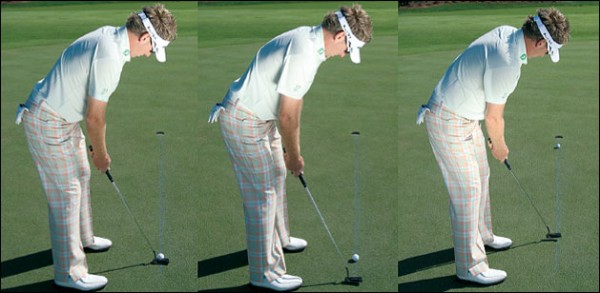
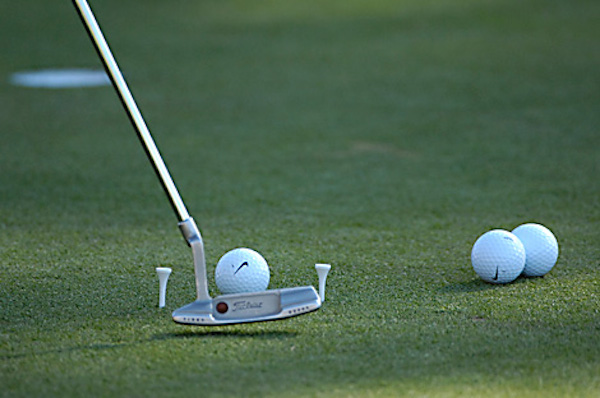
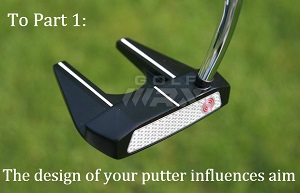
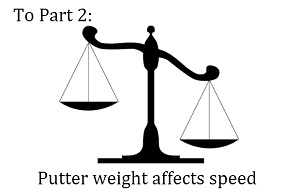
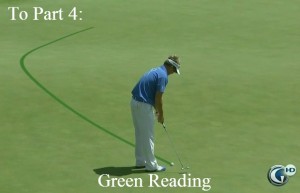
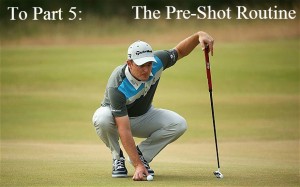






















Bruce Rearick
Dec 25, 2013 at 9:25 am
What happens when the shape/design you aim best doesn’t match your stroke path?
Henry Stetina
Dec 28, 2013 at 10:56 am
Bruce, It is great to hear from you. Good question. I believe this is the key balancing act in being a fitter. Rotational requirements of a putter has a great deal to do with hosel configuration, weight distribution, length and lie. That being said, I like to get an understanding of a person’s intended stroke type and then watch their stroke to see if what they are producing matches their intention. For example, if a person wants a SBST style of stroke and can benefit from a “face-balanced,” I first look into a hosel that produces a “face-balanced” putter. Then I can change head shape, sight lines, length, and lie to find something that they aim correctly. Then it is all about weight for speed control and how it affects face rotation. I constantly watch how a person controls all three variables, aim, path, and speed to make the adjustments necessary.
Does this answer your question? What are you thoughts?
Bruce Rearick
Dec 30, 2013 at 8:39 pm
I think it is best to learn to aim what swings in balance with your stroke.
Davis
Dec 24, 2013 at 12:44 pm
“the fact of the matter is that a true SBST stroke is a manipulation of the hands and the wrists, whereas the arcing stroke adheres more to the laws of geometry and physics.”
This is untrue.
The arc of someones stroke is a product of where his hands are in relationship to his shoulders. If a person’s hands are directly under his shoulders then his stroke will be SBST. The further in front of the shoulders the person’s hands are, the greater the arc is (assuming that you are making a shoulders only putting stroke).
Matt
Dec 25, 2013 at 2:08 am
I think the article is correct. If you look it up, I’m sure you’ll find better explanations than what I’d give. But with the angle of the spine, arms, and lie, it is not possible to have a true sbst stroke without a lot of moving parts (hands, forearms).
That being said, I consider myself sbst because it’s close enough.
J C
Dec 25, 2013 at 3:55 am
what you think is sbst most of the time really follows the shaft lie plane. only way to be truely sbst is to have a 90 degree lie and move rotating joints along the vertical plane. and that causes a different problem. the club head will bottom out at the ball adn will be either decending or ascending if you falter in any other aspect of your swing, causing you to push the ball down into the green or hit up on it. im not sure if either is better i havent had the opportunity to see one of those nice putter fitting machines or know the logistics behind the best roll of the ball.
J C
Dec 25, 2013 at 3:56 am
im tired looks like a 12 yr old wrote that sorry.
Davis
Dec 26, 2013 at 10:17 am
If you haven’t, go check out David Pelz’s putting book. Not a crazy huge Pelz fan but his work on his first book is incredible. He uses his scientific approach from his time at NASA and really proves the SBST stroke.
Henry Stetina
Dec 28, 2013 at 11:41 am
Davis,
Take a look at this diagram. In both images the hands hang directly beneath the shoulders and yet it seems impossible to swing the putter SBST without manipulation of the hands. If I am wrong, will you please expand on your comment?
https://scontent-b-dfw.xx.fbcdn.net/hphotos-ash4/1480661_10151971554977530_967009183_n.png
Steve
Feb 2, 2014 at 8:14 pm
SAM Putt Lab designer did a study using Neuroscientists and found that the SBST type stroke indeed increased the use of the muscles in the lower arms during the takeaway. You have to remember that people putt on a tilted axis which is the neck and consequently the stroke will move around that axis creating natural rotation.
Dave Pelz has been an SBST proponent and when faced with this study at a PGA conference in Germany, he was baffled by the results of this study that basically disproved the SBST stroke he had been teaching.
In order to have a true SBST the lie angle of the putter would need to be 90 degees to be able to make an SBST stroke.
Great article Matt.
Kemptx
Jun 16, 2014 at 9:22 pm
Some years ago I attended a Pelz short game school. While talking about the putting stroke, one of the instructors admitted that all putting strokes have a certain degree of arc in them. I don’t know if he meant to say that as it was in opposition to what they had been teaching during the school.
Andrew
Dec 23, 2013 at 6:25 pm
I had some putting lessons earlier this year. All my problems game from aiming too far left and having a putter that didn’t suit my stroke and aim (SC Del Mar)
Moved to a center shaft SC Newport and read/aim using my dominant eye and my putting has improved massively.
Currently averaging 28 putts a round!
Really interesting set of articles Henry…putting is 40% of the game and it’s easy for most to see an improvement with a few lessons and a bit of practice!
Jadon
Dec 26, 2013 at 8:56 am
Does that mean you have a SC Del Mar you’re wanting to put in the garbage???? Let me take it off your hands.
Henry Stetina
Dec 28, 2013 at 11:44 am
Andrew, thank you for your feedback. Sounds as though you have already found a benefit from learning about putter design. Great to hear!